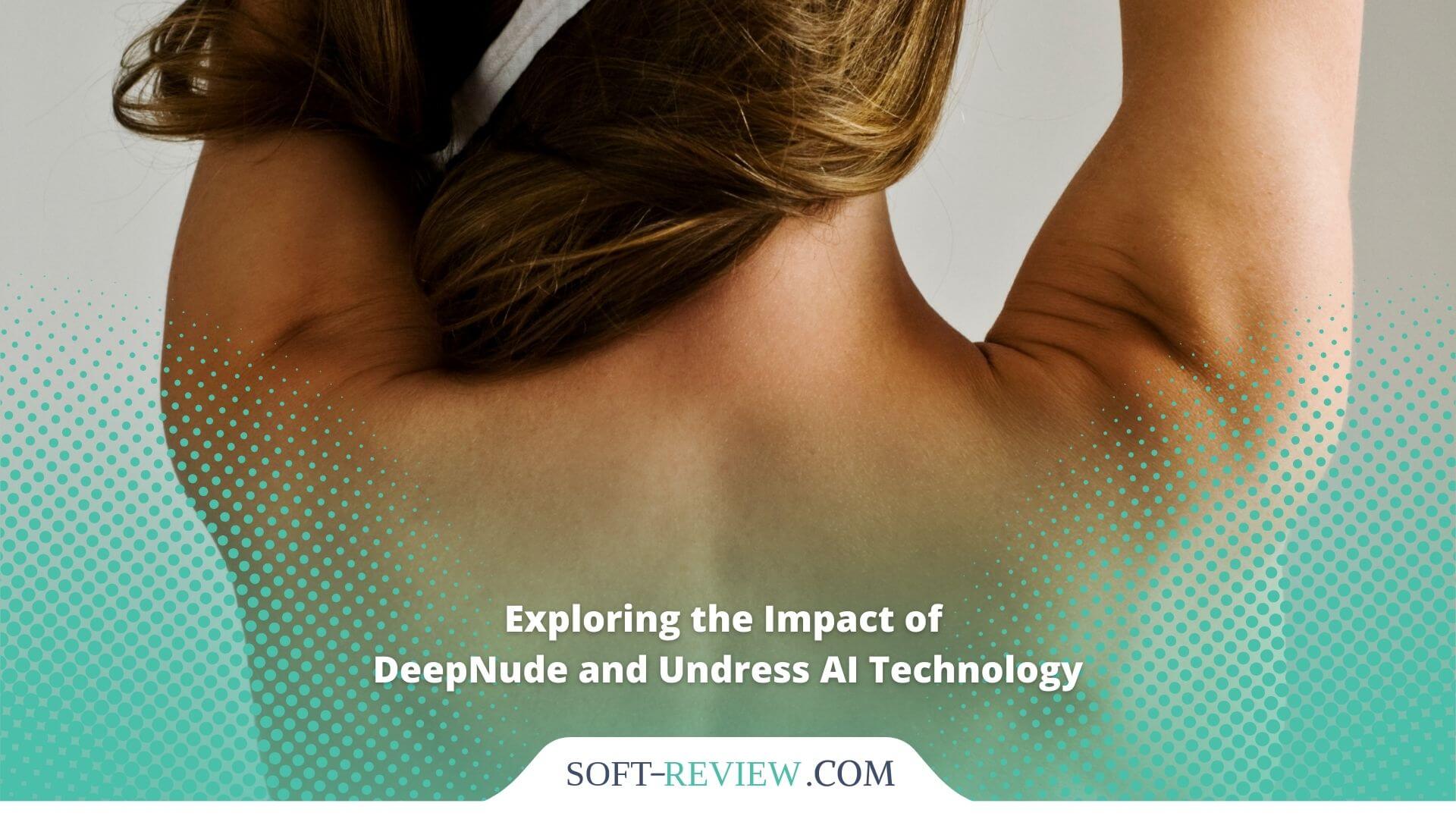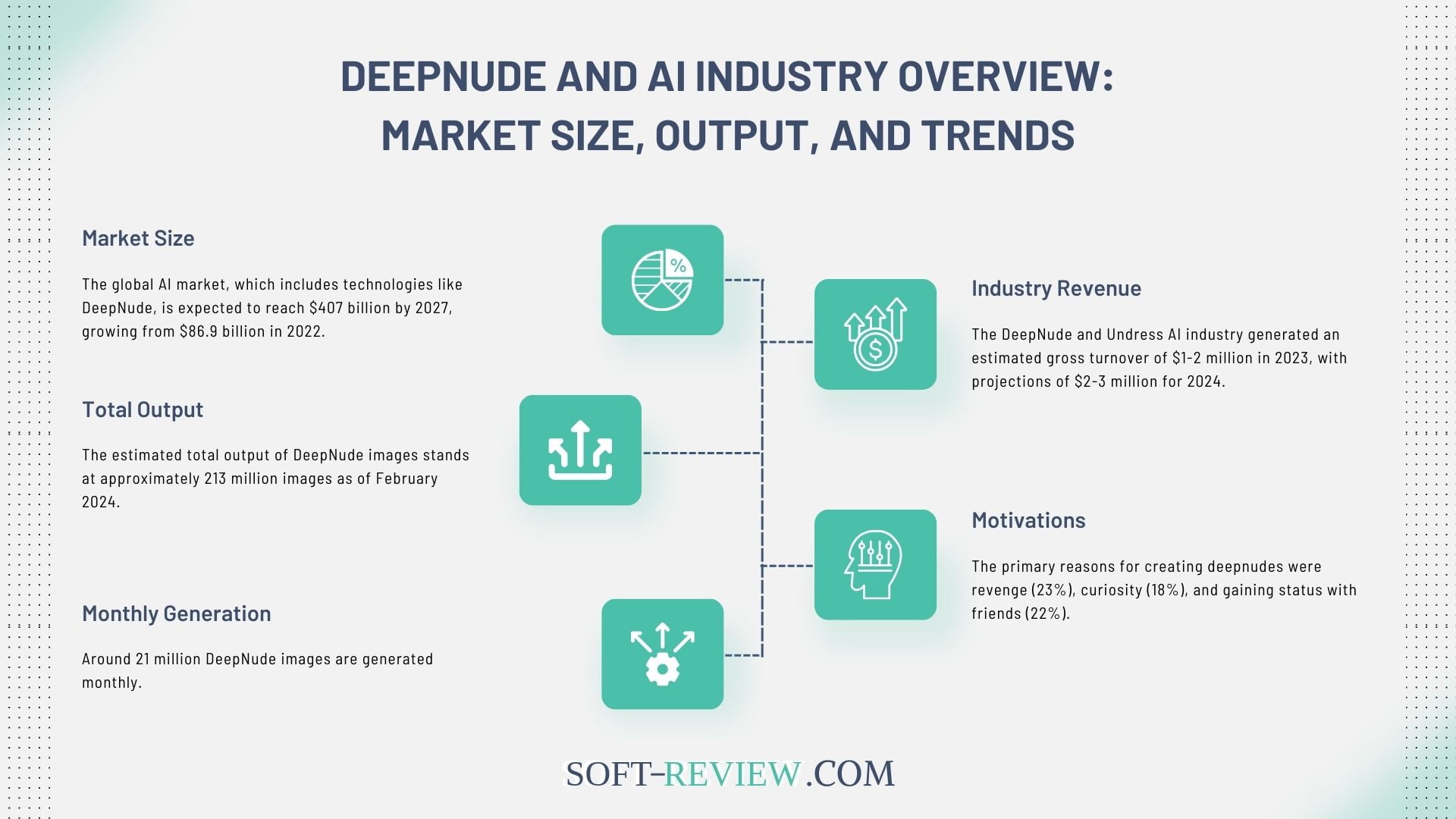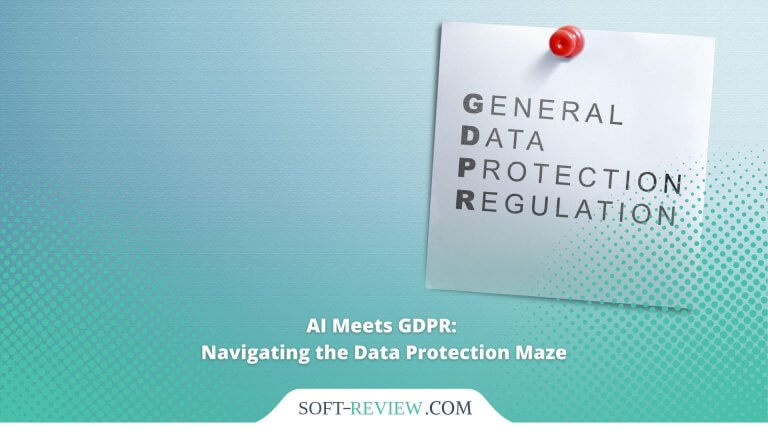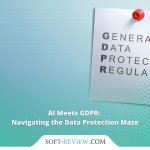<!-- wp:social-links --><ul class="wp-block-social-links"><!-- wp:social-link {"url":"https://gravatar.com/wwwsoftreviewcom","service":"gravatar","rel":"me"} /--></ul><!-- /wp:social-links -->

Exploring the Impact of DeepNude and Undress AI Technology
Table of Contents
Undress AI technology, often combined with face swap capabilities, leverages advanced algorithms and deep learning to digitally remove clothing from images and replace facial features, creating significant ethical and privacy concerns. While the technology has beneficial applications—such as enhancing virtual fitting rooms and streamlining costume design—it poses risks like non-consensual image manipulation and potential misuse in harassment or blackmail. The production of realistic nude images without consent can lead to severe emotional and reputational harm. To mitigate these risks, robust privacy protections, explicit consent protocols, and updated regulatory measures are necessary. Understanding both the capabilities and implications of this AI technology is vital for managing its impact responsibly.
Introduction to Undress AI App
Undress AI is a sophisticated technology that uses artificial intelligence to digitally remove clothing from images, creating nude representations of the subjects. This process involves advanced algorithms that identify and manipulate specific parts of an image to generate realistic results. Understanding how Undress AI works is essential to appreciating its capabilities and the ethical considerations it raises.
What is Undress AI Tool?
Leveraging the power of neural networks and machine learning algorithms, Undress AI represents a cutting-edge technology designed to manipulate images by digitally removing clothing. This advanced AI technology enables an ai clothing remover function, allowing users to upload images and achieve remarkably realistic results. By processing uploaded photos, the system generates altered versions where the clothing is digitally removed, creating the illusion of nudity.
The technology behind Undress AI involves complex neural networks trained on extensive datasets to guarantee accuracy and realism. Users can upload images taken from normal angles, and the AI processes these to deliver high-quality outputs. Despite the technological sophistication, the platform emphasizes privacy, guaranteeing that uploaded images are not stored or saved, thereby protecting user confidentiality.
Undress AI’s ability to produce realistic results has made it a notable innovation in the field of image editing and manipulation. However, its application raises critical ethical and legal questions, particularly concerning consent and privacy. As users engage with this technology, the importance of understanding its implications and responsible use cannot be overstated, guaranteeing that the advancements in AI do not compromise individual rights and societal norms.
How Undress AI Works
Building upon the foundational understanding of what Undress AI entails, it is critical to explore the detailed mechanisms that enable this technology to function effectively. Undress AI uses advanced AI technology to remove clothes and generate realistic nude images from clothed photographs. This process involves several key steps:
- Data Training: The AI model is trained on thousands of images to accurately render nude images by learning patterns and visual cues associated with human anatomy and clothing.
- Image Processing: Once a user uploads a photo, the AI technology identifies and segments clothing from the image. It then uses artificial intelligence to predict and create the underlying nude image.
- Customization Options: Users can choose different generation modes to customize the output, enhancing the realism and personalization of the final image.
- Secure Handling: To guarantee privacy, the system processes images promptly without storing any user data, providing a secure and confidential experience.

The Technology Behind Nude AI App
The technology behind Nude AI relies on advanced algorithms and machine learning to create realistic nude images by identifying and manipulating visual elements in photos. This process involves training AI models on vast datasets to enhance accuracy and realism, which raises significant ethical considerations regarding consent and privacy. As the capabilities of these algorithms grow, it becomes vital to address the potential misuse and societal impact of such technology.
Image Manipulation Algorithms and Machine Learning
Harnessing the power of machine learning, Undress AI employs sophisticated algorithms to generate realistic nude images from clothed photographs. This technology leverages advanced artificial intelligence to analyze and manipulate images with high precision. By utilizing deep learning techniques, the AI model identifies and segments clothing, then generates a realistic representation of the underlying anatomy based on extensive training data.
The process involves several key steps:
- Image Recognition and Classification: The AI first identifies the subject and distinguishes between different types of clothing and body parts.
- Clothing Segmentation: Advanced algorithms segment the clothing from the image, focusing on edges and textures to guarantee accuracy.
- Image Generation: Using generative adversarial networks (GANs), the AI creates realistic nude images by simulating skin textures and anatomical features.
- Quality Enhancement: Post-processing techniques enhance the quality of the generated images, guaranteeing they appear natural and realistic.
This combination of machine learning, deep learning, and image generation technologies allows Undress AI to produce highly realistic results. The continuous improvement of these algorithms guarantees increasing accuracy and realism, showcasing the capabilities of advanced artificial intelligence in image processing.
Ethical Considerations Surrounding DeepNude Technology
While the technological prowess of Undress AI demonstrates the incredible potential of machine learning and image processing, it simultaneously raises profound ethical concerns regarding privacy, consent, and the risk of misuse. The ethical challenges posed by this technology are significant, as it has the potential to infringe upon user privacy and be misused in ways that violate personal consent.
| Key Ethical Considerations | Description |
|---|---|
| Privacy | Protecting user privacy is essential, as the misuse of such technology could lead to unauthorized exposure of personal images. |
| Consent | Confirming that individuals depicted in images have given explicit consent is vital to prevent non-consensual use. |
| Potential for Misuse | The technology could be exploited to create and distribute non-consensual images, leading to severe emotional and psychological harm. |
| User Privacy | Applications must implement stringent measures to safeguard user data and guarantee that uploaded images are not stored or misused. |
Addressing these ethical challenges requires robust privacy protections, clear consent protocols, and strict regulations to prevent misuse. Platforms utilizing Undress AI must prioritize transparency and user education to foster responsible use. By implementing these measures, the technology can be developed and used in a manner that respects individual rights and mitigates potential harms.
Applications of Clothes Remover AI
The application of clothes remover AI spans across various industries, including fashion and entertainment, where it can be used for virtual fitting rooms and special effects. However, the potential for misuse, such as creating non-consensual images, raises significant ethical and legal concerns. Balancing the innovative benefits with the risks of privacy violations is essential for responsible deployment of this technology.
Practical Uses of Deepnude Images in Fashion and Entertainment
A multitude of practical applications for clothes remover AI technology exist within the fashion and entertainment industries, providing innovative solutions for virtual fitting rooms, costume design, and visual effects. Fashion designers can leverage ‘undress AI’ to streamline the creation process by visualizing how different fabrics and designs will appear on various body types without needing physical prototypes. This can greatly reduce both time and material costs.
In the domain of virtual fitting rooms, undress AI offers consumers a personalized and interactive shopping experience. By digitally removing clothing and replacing it with new garments, shoppers can see how outfits will look on their actual bodies, leading to more informed purchasing decisions.
Markdown:
- Virtual Fitting Rooms: Enhance online shopping by allowing users to try on clothes digitally.
- Costume Design: Aid costume designers in visualizing and adjusting costumes on actors without physical trials.
- Special Effects: Facilitate the creation of realistic visual effects in films and television by seamlessly integrating digital elements.
- Fashion Prototyping: Enable designers to experiment with different designs and materials virtually, reducing waste and improving efficiency.
The entertainment industries also benefit from undress AI in special effects, where it can create realistic digital alterations, thereby saving time and resources in post-production. Overall, this technology promises to revolutionize various aspects of fashion and entertainment.
Potential Risks and Misuse of Undress AI Apps
Undress AI technology poses substantial risks, including the potential for non-consensual use and significant breaches of privacy. The advanced image manipulation capabilities of AI undress tools can be exploited to create deepfake pornography, where images of individuals are altered without their permission to appear nude. This misuse not only violates privacy but also can inflict severe emotional and reputational harm on victims.
The lack of proper consent is a critical issue in the deployment of such technology. When images are manipulated to generate nudity without the subject’s approval, it constitutes a profound invasion of personal boundaries and dignity. This unauthorized use can lead to legal repercussions and ethical dilemmas, particularly when these images are distributed or shared online.
Moreover, the dissemination of non-consensual, AI-generated nudity exacerbates the problem of online harassment and exploitation. It is imperative for developers and users to recognize the significant ethical and legal responsibilities associated with these advanced image technologies. Implementing stringent safeguards, educating users about the importance of consent, and developing robust policies against misuse are essential steps to mitigate the risks posed by AI undress technology.
Legal and Ethical Implications of Undress Apps
The rise of Undress AI technology brings significant privacy concerns, particularly regarding the non-consensual use of altered images. Additionally, the current regulatory landscape struggles to keep pace with such advancements, raising questions about the adequacy of existing laws and the need for new regulations. These issues require a thorough examination of both legal standards and ethical guidelines to guarantee responsible and lawful use of this technology.
Privacy Concerns of AI-Powered Deep Nude Technologies
Privacy concerns surrounding Undress AI technology are profound, as it enables the creation of non-consensual explicit images, thereby infringing on individual rights and dignity. This technology, which functions as an ai nude generator, allows users to remove clothing from images, creating realistic nude representations without the subject’s consent. Such actions pose significant risks to privacy and have far-reaching ethical and legal consequences.
The primary privacy concerns of create deepnude technologies include:
- Non-consensual explicit images: The ability to generate realistic nude images without the subject’s permission violates personal privacy and can lead to severe emotional and psychological harm.
- Data security risks: Although some platforms claim not to store user data, the potential for data breaches remains a critical issue, potentially exposing sensitive images.
- Misuse by malicious actors: The ease of access to this technology makes it susceptible to misuse for harassment, blackmail, or other malicious purposes.
- Lack of regulatory oversight: The rapid development of such technologies often outpaces the creation and enforcement of appropriate legal frameworks, leaving users vulnerable.
Addressing these privacy concerns is essential to guarantee that the development and use of Undress AI technology respect individual rights and adhere to ethical standards.
Regulatory Landscape of Deepnude AI Apps
Given the notable privacy concerns associated with Undress AI technology, addressing the legal and ethical implications becomes paramount in the regulatory landscape. This undress ai tool, which uses artificial intelligence to generate nude images from clothed photos, presents complex challenges for lawmakers and regulators worldwide.
The regulatory landscape for AI technologies like Undress AI varies considerably across regions. In many jurisdictions, existing laws and regulations struggle to keep pace with the rapid advancements in AI capabilities. This mismatch creates a pressing need for updated legal frameworks that specifically address the unique issues posed by AI-driven image manipulation. Key areas of concern include consent, data privacy, and the potential for misuse, particularly in non-consensual contexts.
While some countries have begun to incorporate specific provisions into their laws, others rely on broader privacy and data protection regulations. The user-friendly interface of Undress AI tools also demands stringent security measures to prevent unauthorized access and guarantee user data is safeguarded. Policymakers must balance innovation with ethical considerations, ensuring that regulations protect individuals’ rights without stifling technological progress. Thorough laws and regulations are essential to navigate the ethical and legal complexities of AI technology, fostering responsible use while mitigating potential harms.
The Future of Undress AI
As AI technology advances, Undress AI is poised to achieve even more sophisticated levels of image manipulation, potentially enhancing realism and customization. However, these advancements must be balanced with responsible innovation to address the ethical and legal concerns that arise from such powerful capabilities. Ensuring thorough regulatory frameworks and promoting ethical usage will be essential in steering the future landscape of Undress AI technology.
Advancements in AI Technology
The future of Undress AI is poised to be shaped by ongoing advancements in deep-learning algorithms and image processing technologies, promising unprecedented levels of realism and customization. As AI technology continues to evolve, the capabilities of undress AI apps will likely expand, enhancing both the quality and accuracy of generated images. This evolution will be driven by several key factors:
- Enhanced Deep Learning Algorithms: Continuous improvements in deep learning algorithms will enable more precise and realistic image manipulation, allowing undress AI apps to generate highly detailed and lifelike representations.
- Advanced Image Processing Techniques: Innovations in image processing will facilitate more sophisticated techniques for clothing removal and background integration, resulting in seamless and convincing output.
- Customization Features: Future versions of undress AI apps will likely offer more extensive customization options, allowing users to adjust various parameters to achieve their desired results.
- Faster Processing Speeds: As computational power increases, undress AI apps will be able to process images more rapidly, providing users with near-instant results.
These advancements in AI technology will not only enhance user experience but also raise important ethical considerations, which will be discussed in the subsequent sections of this article.
Balancing Innovation with Responsibility for Content Creators
Balancing the rapid advancements in Undress AI technology with ethical responsibility necessitates a thorough framework that addresses both innovation and the potential for misuse. As undress ai pro tools become increasingly sophisticated, there is a pressing need for regulatory oversight to guarantee that these technologies are used responsibly. This includes creating guidelines that prevent non-consensual use and protect individual privacy.
Ethical responsibility should be at the forefront of AI technology development. Developers must consider the implications of their creations, particularly when enabling users to create sensitive content. Implementing robust privacy policies and secure data handling practices can help mitigate potential abuses. Additionally, educating users on ethical usage is vital to fostering a community that respects the rights and dignity of all individuals.
Regulatory oversight is essential in balancing innovation with responsibility. Governments and industry bodies must collaborate to establish clear regulations that address the unique challenges posed by undress AI technology. This includes setting standards for consent, data protection, and usage limitations. By proactively addressing these issues, stakeholders can guarantee that AI advancements contribute positively to society while minimizing harm.
Conclusion
The advent of Undress AI technology signifies a pivotal development in image manipulation, with profound implications across various sectors. While offering innovative applications, it concurrently raises significant ethical, legal, and societal concerns. Addressing these challenges necessitates robust regulatory frameworks and responsible usage guidelines. Future integration of this technology must balance innovation with the protection of individual privacy and societal norms, ensuring ethical use while fostering technological advancement. This equilibrium is essential for its sustainable incorporation into contemporary society.






